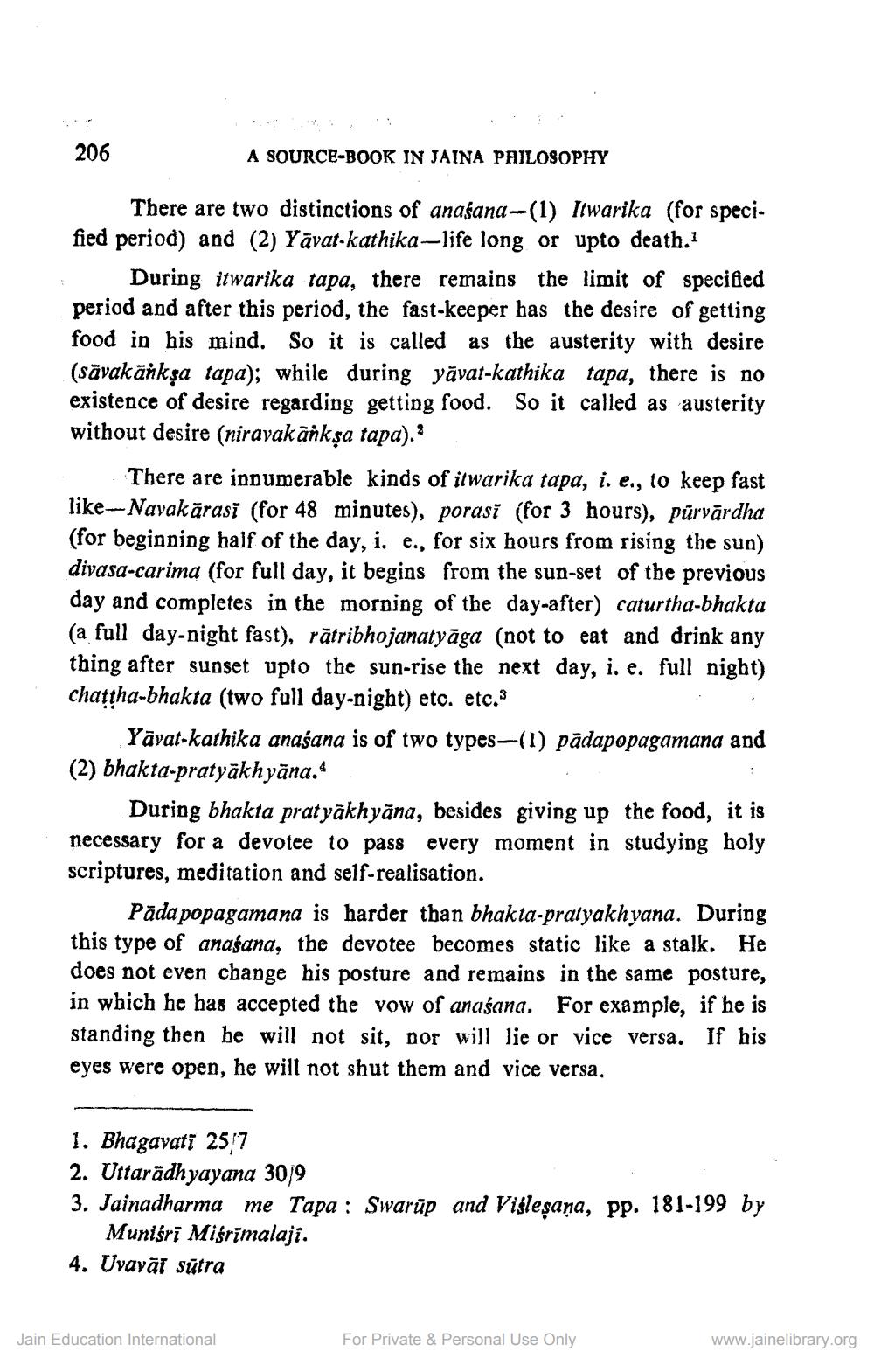________________
206
There are two distinctions of anaśana-(1) Itwarika (for specified period) and (2) Yavat-kathika-life long or upto death.1
A SOURCE-BOOK IN JAINA PHILOSOPHY
During itwarika tapa, there remains the limit of specified period and after this period, the fast-keeper has the desire of getting food in his mind. So it is called as the austerity with desire (sāvakānkṣa tapa); while during yāvat-kathika tapa, there is no existence of desire regarding getting food. So it called as austerity without desire (niravakankṣa tapa).'
There are innumerable kinds of itwarika tapa, i. e., to keep fast like-Navakarasi (for 48 minutes), porasi (for 3 hours), pūrvärdha (for beginning half of the day, i. e., for six hours from rising the sun) divasa-carima (for full day, it begins from the sun-set of the previous day and completes in the morning of the day-after) caturtha-bhakta (a full day-night fast), ratribhojanatyāga (not to eat and drink any thing after sunset upto the sun-rise the next day, i. e. full night) chattha-bhakta (two full day-night) etc. etc.3
Yavat-kathika anaśana is of two types-(1) pādapopagamana and (2) bhakta-pratyākhyāna.1
During bhakta pratyākhyāna, besides giving up the food, it is necessary for a devotee to pass every moment in studying holy scriptures, meditation and self-realisation.
Pāda popagamana is harder than bhakta-pratyakhyana. During this type of anasana, the devotee becomes static like a stalk. He does not even change his posture and remains in the same posture, in which he has accepted the vow of anaśana. For example, if he is standing then he will not sit, nor will lie or vice versa. If his eyes were open, he will not shut them and vice versa.
1. Bhagavati 25/7
2. Uttaradhyayana 30/9
3. Jainadharma me Tapa: Swarup and Viśleṣaṇa, pp. 181-199 by
Muniśrī Misrimalaji.
4. Uvavai sutra
Jain Education International
For Private & Personal Use Only
www.jainelibrary.org




